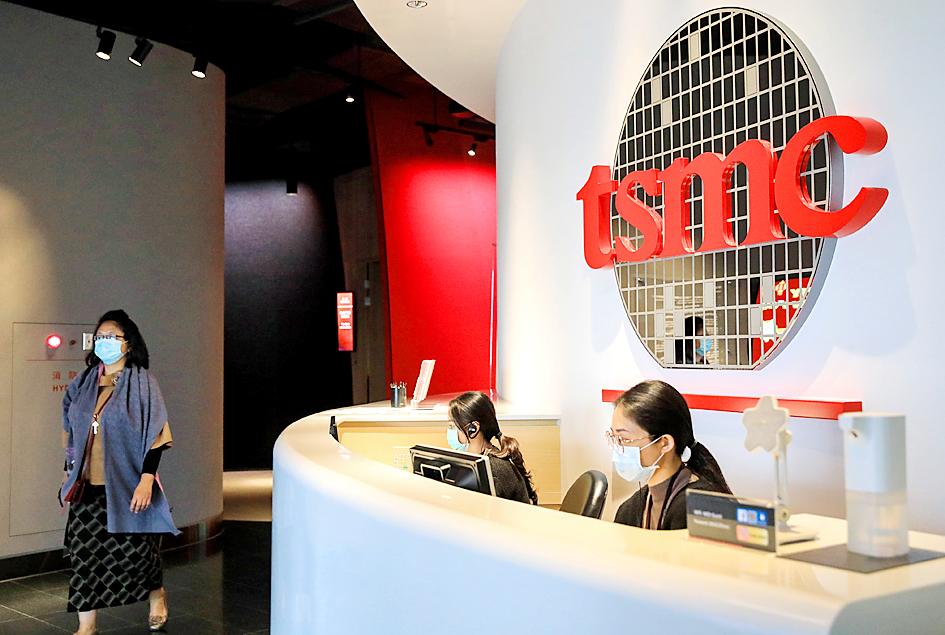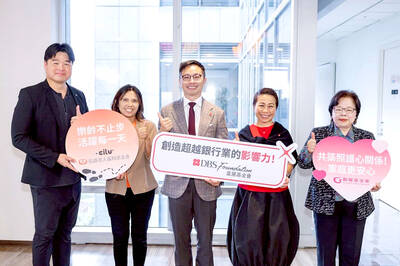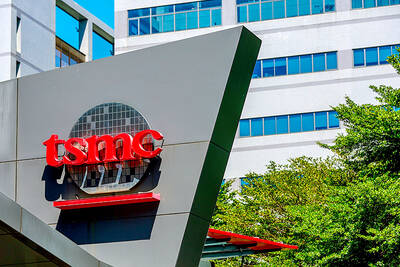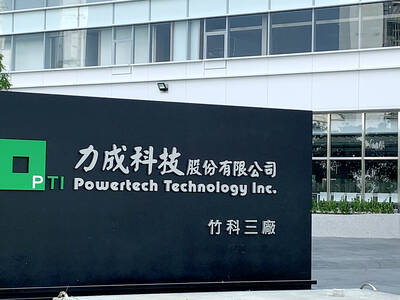Taiwan Semiconductor Manufacturing Co (TSMC, 台積電) is planning to boost this year’s capital expenditure budget by about 46 percent to exceed US$44 billion, citing strong customer demand for advanced technologies used in high-performance computing (HPC) and 5G-related applications, the world’s largest contract chipmaker said yesterday.
The plan marks a record spending for TSMC after the chipmaker budgeted US$30 billion for capacity expansions at home and overseas fabs last year.
TSMC is planning to allocate about 80 percent of this year’s capital spending for advanced chip capacity expansion including 2-nanometer, 3-nanometer, 5-nanometer and 7-nanometer technologies.

Photo: I-Hwa Cheng, Bloomberg
The chipmaker reiterated that it is on track to ramp up 3-nanometer production in the second half of this year, dismissing speculation about a delay.
The chipmaker is seeing more customer interest in semiconductors using 3-nanometer technology than 5-nanometer chips, the most advanced chips available currently.
“We expect 2022 to be another strong growth” period, TSMC chief executive officer C.C. Wei (魏哲家) told a quarterly investors’ teleconference yesterday.
“We are confident we can outperform foundry [sector] growth,” he said, setting a growth target of 25 to 29 percent.
The chipmaker would this year benefit from “a structural increase in demand fueled by HPC, accelerated digitalization and short-term chip supply imbalance because of COVID-19 and geopolitical tensions,” Wei said.
The revenue forecast factored in that one of its customers, an integrated device manufacturer linked to Intel Corp, is “insourcing” production after re-entering the foundry sector, TSMC said.
The chipmaker expects its capacity to remain tight through this year, given the increased use of chips in vehicles, PCs, servers, networking devices and smartphones.
Forecasting robust growth momentum, the chipmaker expects customer prepayment to pick up this year, after it last year received prepayments totaling US$6.7 billion.
TSMC expects the growth momentum to extend into the next few years, with revenue to expand at an annual compound growth rate of 15 to 20 percent.
HPC applications would grow at the fastest pace with robust demand for CPU, GPU and artificial intelligence accelerators, the chipmaker said.
TSMC raised its forecast for gross margin over the next few years to above 53 percent from 50 percent forecast earlier.
This quarter, gross margin would improve to 53 to 55 percent from 52.7 percent last quarter, it said.
Revenue is to expand more than 7 percent to US$16.6 billion to US$17.2 billion from the previous quarter, beating Goldman Sachs Group Inc’s forecast of a quarterly growth of 3.7 percent.
“Moving into the first quarter of 2022, we expect our business to be supported by HPC-related demand, continued recovery in the automotive segment and a milder smartphone seasonality than in recent years,” TSMC chief financial officer Wendell Huang (黃仁昭) said.
For the final quarter of last year, the chipmaker posted a profit increase of 16.4 percent to a record NT$166.23 billion (US$6.01 billion), compared with NT$142.77 billion a year earlier.
On a quarterly basis, net profit increased 6.4 percent from NT$156.26 billion, it said.
For the whole of last year, TSMC’s net profit rose about 15 percent to NT$596.54 billion from NT$517.89 billion in 2020.
Earnings per share were NT$23.01, up from NT$19.97 the previous year, it said.

The DBS Foundation yesterday announced the launch of two flagship programs, “Silver Motion” and “Happier Caregiver, Healthier Seniors,” in partnership with CCILU Ltd, Hondao Senior Citizens’ Welfare Foundation and the Garden of Hope Foundation to help Taiwan face the challenges of a rapidly aging population. The foundation said it would invest S$4.91 million (US$3.8 million) over three years to foster inclusion and resilience in an aging society. “Aging may bring challenges, but it also brings opportunities. With many Asian markets rapidly becoming super-aged, the DBS Foundation is working with a regional ecosystem of like-minded partners across the private, public and people sectors

Taiwan Semiconductor Manufacturing Co (TSMC, 台積電) has secured three construction permits for its plan to build a state-of-the-art A14 wafer fab in Taichung, and is likely to start construction soon, the Central Taiwan Science Park Bureau said yesterday. Speaking with CNA, Wang Chun-chieh (王俊傑), deputy director general of the science park bureau, said the world’s largest contract chipmaker has received three construction permits — one to build a fab to roll out sophisticated chips, another to build a central utility plant to provide water and electricity for the facility and the other to build three office buildings. With the three permits, TSMC

BREAKTHROUGH TECH: Powertech expects its fan-out PLP system to become mainstream, saying it can offer three-times greater production throughput Chip packaging service provider Powertech Technology Inc (力成科技) plans to more than double its capital expenditures next year to more than NT$40 billion (US$1.31 billion) as demand for its new panel-level packaging (PLP) technology, primarily used in chips for artificial intelligence (AI) applications, has greatly exceeded what it can supply. A significant portion of the budget, about US$1 billion, would be earmarked for fan-out PLP technology, Powertech told investors yesterday. Its heavy investment in fan-out PLP technology over the past 10 years is expected to bear fruit in 2027 after the technology enters volume production, it said, adding that the tech would

YEAR-END BOOST: The holiday shopping season in the US and Europe, combined with rising demand for AI applications, is expected to drive exports to a new high, the NDC said Taiwan’s business climate monitor improved last month, transitioning from steady growth for the first time in five months, as robust global demand for artificial intelligence (AI) products and new iPhone shipments boosted exports and corporate sales, the National Development Council (NDC) said yesterday. The council uses a five-color system to measure the nation’s economic state, with “green” indicating steady growth, “red” suggesting a boom and “blue” reflecting a recession. “Yellow-red” and “yellow-blue” suggest a transition to a stronger or weaker condition. The total score of the monitor’s composite index rose to 35 points from a revised 31 in August, ending a four-month